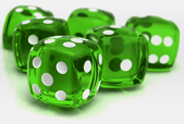Card Counting Blackjack Strategy
In addition to the high-low card counting system, other systems can be effective as well. The high-low system gained popularity because it’s simple, even for the average person. The major attraction for the high-low system has always been its simple nature, but other factors come into play to determine which counting system will be most effective for you. When considering betting systems, you should also keep in mind how often and at what levels you play.
In the early 1980s, Ken Uston created a counting system that later became the Uston Advanced Point Count (APC). This counting system places values upon the cards as well, but in a different way. As it is one of the more difficult card counting systems, the Uston APC is meant for professional blackjack players. Only a professional player will have the time to dedicate to learning this complicated system, but if you do, success could be in your future.
| Cards | 2 | 3 | 4 | 5 | 6 | 7 | 8 | 9 | 10,J,Q,K | A |
| Values | 1 | 2 | 2 | 3 | 2 | 2 | 1 | -1 | -3 | 0 |
Another complicated but useful counting system is the Wong halves. Created by Stanford Wong, Wong halves rely on fractions to increase your bets and your win rate. In addition, this counting system is for professionals as well as players that have the time to learn this complicated card counting system. There is one advantage to this system, that is, your win rate is slightly higher.
| Cards | 2 | 3 | 4 | 5 | 6 | 7 | 8 | 9 | 10,J,Q,K | A |
| Values | 0.5 | 1 | 1 | 1.5 | 1 | 1.5 | 0 | -0.5 | -1 | -1 |
A technique that most resembles the high-low counting system is Red Sevens. This system gives all cards the same value as the high-low systems, except for the red 7’s. Red sevens are given a value of 1 and black sevens receive a value of 0. This may seem complicated, but all sevens in the deck have a value of .5, which is pretty accurate when you consider how much of an advantage a player can gain with a 7. This system is easy to learn, but because this system has a negative starting point, you may miss an opportunity during the first few hands of a deck.
| Card | 2 | 3 | 4 | 5 | 6 | Red 7 | Black 7 | 8 | 9 | 10,J,Q,K | Ace |
| Value | 1 | 1 | 1 | 1 | 1 | 1 | 0 | 0 | 0 | -1 | -1 |
The Red Sevens creator is also responsible for the Zen system, which places additional value to the 4, 5, 6 and 10. The only point of argument with this system seems to be the -1 value assigned to the Ace. The advantage of the Zen system is that it allows each player to bet to his or her advantage, but because it is a level two counting system, it’s more difficult to learn and it requires much more practice.
| Cards | 2 | 3 | 4 | 5 | 6 | 7 | 8 | 9 | 10,J,Q,K | A |
| Values | 1 | 1 | 2 | 2 | 2 | 1 | 0 | 0 | -2 | -1 |
Another level two counting system is Hi-OPT II. This system values the 10 and face cards at -2 and the Ace at 0, and it is intended for experienced blackjack players. There are more values to keep track of, which makes it difficult to concentrate at the table. This system has proven very effective
for many players, but before attempting this, you should master the Hi-OPT I system.
| Cards | 2 | 3 | 4 | 5 | 6 | 7 | 8 | 9 | 10,J,Q,K | A |
| Values | 1 | 1 | 2 | 2 | 1 | 1 | 0 | 0 | -2 | 0 |
As you can see, each of these systems requires a different level of experience, and as you improve your game, you will have more opportunities to make these counting systems work for you.

